source(google.com.pk)
Zero Suit Samus Biography
Samus Aran (Japanese: サムス・アラン Hepburn: Samusu Aran?) is a fictional character and the protagonist of the Metroid science fiction action game series by Nintendo.
Introduced in the 1986 video game Metroid, Samus is an ex-Galactic Federation soldier turned bounty hunter, usually fitted with a powered armor suit with weapons that include beams and missiles. Throughout the series, she executes missions given to her by the Galactic Federation while hunting the antagonistic Space Pirates and their leader, Ridley, along with the energy-draining extraterrestrial parasites called Metroids. Samus has appeared in all Metroid video games and has also been featured in media outside of the series, including the comic book version of Captain N: The Game Master and the Super Smash Bros. series.
She is well known as one of the earliest female protagonists in video game history and remains a popular character over a quarter-century after her first appearance. Guinness World Records 2013: Gamer's Edition recognized Samus as "the first playable human female character in a mainstream videogame" and as being "enduringly" popular, noting that sales of the Metroid series has exceeded 17.44 million copies as of 22 September 2012.
Super Metroid's Player's Guide describes Samus as a young blonde woman, who is 6 ft 3 in (1.91 m) tall and weighs 198 pounds (90 kg) without her armor. She is mostly seen inside the Power Suit, a powered exoskeleton which protects her from most dangers she encounters, and is typically enhanced by power-ups players encounter during gameplay. Typically, one of her suit's arms carries a cannon, which can be charged to shoot an extra-powerful blast, a limited number of missiles, and various beams. Samus's suit can collapse into a sphere, a mode called the Morph Ball, allowing her to roll through tight areas such as tunnels. The suit can scan objects to learn more about them, and has a grapple beam used to cross large distances, such as chasms. Since Metroid II: Return of Samus, Samus has been accompanied by her Gunship, which is used in the games to save progress and restore health and ammunition. Appearances of Samus outside the Power Suit occur mostly in cutscenes, such as ending screens showing Samus in more revealing clothing. Metroid: Zero Mission also introduced the Zero Suit, a form-fitting jumpsuit that she dons below the Power Suit.
The Metroid e-manga covers Samus's origins. She was born and raised on the mining planet K-2L, and when she was a child, the planet was raided by Space Pirates, led by Ridley, in an attack that killed both her parents and destroyed the planet. The orphaned Samus was then found by a bird-like alien race known as the Chozo, who brought her to their home planet Zebes. Samus was infused with Chozo DNA to give her a strong resistance to foreign environments, then trained as a warrior and given one of the alien race's artifacts, the Power Suit. She enlisted in the Galactic Federation Police, but left for disagreements with her commanding officer Adam Malkovich. Samus then started working as a freelance bounty hunter, and is called on by the Galactic Federation to execute missions "because of her superior skills and sense of justice". Most of her missions revolved around getting rid of unsavory elements such as the mysterious lifeforms known as Metroids, who can drain life energy and are frequently used as biological weapons.
The style for the original Metroid game was designed to be a cross between the side-scrolling gameplay of the Super Mario games and the exploration and puzzle-solving aspects of The Legend of Zelda series, with inspiration from science fiction. The game's characters were conceived by Makoto Kano, while Hiroji Kiyotake designed main protagonist Samus Aran. Samus is able to collapse into a ball to travel through tight areas. The ability, called the Maru Mari (meaning "round ball" in Japanese) in the original Metroid (1986), and later the more popular title of Morph Ball in Super Metroid, was conceived by the developers because it required less effort to animate than "a cyborg crawling on all fours", and the producer for Metroid, Gunpei Yokoi, took advantage of this shortcut.
The game's atmosphere was influenced by Ridley Scott's film, Alien (1979). Series co-creator Yoshio Sakamoto recalled, "We were partway through the development process when one of the staff members said 'Hey, wouldn't that be kind of cool if it turned out that this person inside the suit was a woman?' " The developers voted on the concept, and it passed. The game's instruction manual refers to Samus as if she were male to keep her true gender a secret until the end of the game. Samus was one of the first major female protagonists in a video game. Sakamoto noted that during the course of the Metroid series, developers constantly try to express Samus's femininity without turning her into a sex object. Samus's image was based on actress Kim Basinger from 91⁄2 Weeks and My Stepmother Is an Alien. Sakamoto and Kiyotake said that the character's last name "Aran" was taken from Edson Arantes do Nascimento, the birth name of famous soccer player Pelé.
In Metroid, the Galactic Federation sends Samus to track down the Space Pirates on their home planet of Zebes. Deep within their base, she battles Mother Brain, the organism that controls the base's defenses, and she escapes just as the base self-destructs. In Metroid II: Return of Samus, the Galactic Federation commissions Samus to exterminate all Metroid creatures on the planet SR388. She travels deep into the planet's caverns. After dispatching a Metroid Queen, Samus discovers a small Metroid hatchling, which imprints on her, thinking she is its mother. She spares its life and takes it back to her gunship.
In Super Metroid, just after giving the hatchling to a Federation research station, Samus tracks the hatchling (stolen by Ridley) to a newly rebuilt Space Pirate base on Zebes. She travels deep underground, eventually finding the now-fully-grown Metroid, then battling a new, more powerful Mother Brain. The Metroid hatchling sacrifices itself to save Samus, and Samus in turn defeats Mother Brain and escapes as the entire planet is destroyed. In Metroid Fusion, Samus returns to SR388, where a parasitic infection nearly kills her. Federation scientists surgically remove large sections of her corrupted Varia Suit and inject her with the Metroid hatchling's DNA to save her. To prevent the parasites from spreading beyond SR388 and the space station orbiting above it, Samus sets the station to crash into the planet.
Metroid: Other M, which takes place between Super Metroid and Fusion, provides more information about Samus's backstory and her emotional connection to both the Metroid hatchling and her former commander, Adam Malkovich, as well as her relation to all four Mother Brain designs, namely Zebes' Mother Brains, Aurora Unit 313 and MB.
In Metroid Prime, Samus travels to the planet Tallon IV, which contains a Chozo colony in ruins and a Space Pirate base. There she learns of Phazon, a mysterious mutagen that can alter the genetic material of any organism. Samus is eventually able to access the source of the planet's Phazon contamination, a meteor impact crater, where she defeats the Phazon-infused creature Metroid Prime. In Metroid Prime 2: Echoes, Samus is sent to the planet Aether, a Phazon meteor-ravaged planet split into light and dark dimensions. There she battles the Ing, creatures that are able to possess other organisms, and Dark Samus, an evil doppelgänger of herself formed from the remains of Metroid Prime. In Metroid Prime Hunters, Samus competes against six rival bounty hunters in a race to recover an alien ultimate weapon. In Metroid Prime 3: Corruption, Samus is infected by Phazon and is slowly corrupted by the mutagen while she works to prevent it from spreading to other planets. By the end of the game, she renders all Phazon inert by destroying its original source, the planet Phaaze, and defeats Dark Samus.
Samus was featured in a series of comic books called Captain N: The Game Master, published by Valiant Comics in 1990, based on the animated series of the same name, despite Samus never appearing in the cartoon version. In the comics, Samus is depicted as brash, money-hungry, and fiercely independent. 1UP.com described Samus in the Captain N comics as "rambunctious, reckless, and gets into pissing contests with Lana over Kevin's affections, which makes for some of the most entertaining situations in the series."Comic book and manga adaptations of Metroid games were also developed.
Samus is a playable character in all three games in the Super Smash Bros. series of multiplayer fighting games, where she can use her array of weapons in combat against characters from other video games. Super Smash Bros. Brawl (2008) also features an alternate form of Samus called Zero Suit Samus, in which the heroine loses her Power Suit and has a different set of movements and attacks. She also stars in the Subspace Emissary fighting Ridley with Pikachu by her side.
Samus makes cameo appearances in the games Galactic Pinball (1995), Super Mario RPG (1996), Kirby Super Star (1996), and Kirby's Dream Land 3 (1997), and also makes a non-playable appearance in Dead or Alive: Dimensions by Metroid: Other M co-developers Team Ninja.
As a female in a male-dominated role, Samus has been widely considered a breakthrough for female characters in video games. The Irish Times found it refreshing to learn that the series' protagonist, who is "well disguised under the suit of heavy armour", is female, but The Independent wrote that the "Transformer-like suit she wears could just as easily contain a large centipede; it's hardly a breakthrough for feminism."According to the book Gaming Lives in the Twenty-First Century: Literate Connections, Samus was perhaps the most nonsexualized female video-game character ever, a belief shared in Introduction to Game Development, which also considered Samus as one of Nintendo's most popular video game mascots. According to The Sacramento Bee in 2002, "Unlike most other female video game characters, Samus isn't some husky-voiced bimbo in tight leather included only for sex appeal. Samus is tough, silent, heavily armed and spends most of her time in a bulky suit of high-tech Power Armor."That same year, however, the Toronto Star stated that the "sexual politics" surrounding Samus and the Metroid series needed to stop, arguing that the original "big crazy shock to the gaming public" was "some seriously misspent energy" as she "is not a woman for the benefit of the sweaty/excited crowd, and neither is she a standard-bearer nor a courageous leader in the struggle for video game civil rights. She is a supremely talented action figure, and in the closeups on her helmet you can kind of see that she wears mascara, but that is all."
Nevertheless, much of her media reception came from her sex appeal. GameDaily ranked Samus seventh on a list of the top "hottest game babes", describing her as "a refreshing change of pace, a tough, no nonsense warrior that isn't afraid to remove her famous orange and yellow power suit and let her hair down, especially to reveal her skin tight clothing". She was also listed on GameDaily's list of "hottest" blondes in video games, described as both one of Nintendo's most famous protagonists as well as a "curvaceous, drop-dead-gorgeous woman," and used to illustrate the "smart and sexy heroine" archetype on the list of top video game archetypes. In 2009, UGO.com ranked Samus as 11th on a list of the top "girls of gaming" and as the eighth "hottest sci-fi girl", also including her in the 2011 list of 50 video game "hotties". GameTrailers named Samus number one on a 2006 list of the top ten women of gaming, and number three among top ten "gamer babes". In 2011, GameFront featured her twice on the list of the best "boobs" in video game history, at 40th spot for her reveal in the original game, and at sixth place for her modern appearance in "a ridiculously form-fitting jumpsuit". In 2012, Complex ranked her as the 24th "hottest" video game character, also ranking her as the fourth top "hot female killer" from video games.
In 2009, GameDaily called Samus the video game industry's "first dominant female, a femme de force that didn't rely on a man to save her," also ranking her number one on a list of the top Nintendo characters of all time. In 2010, James Hawkins of Joystick Division ranked her as number one top "badass lady" in video games, adding that she "made every other character on this list possible." That same year, UGO.com ranked her as 20th in a list of top heroes of all-time. In 2011, Nintendo Power listed Samus as their third favourite hero, citing her bravery in the face of dangerous situations. That same year, UGO.com also included her on the lists of the best alternate costumes (for her one-piece bathing swimsuit in the original game) and video game characters who need their own movies. Empire ranked her as the 26th greatest video game character, adding, "whether you see her as a breakthrough for feminism or just another faceless sci-fi warrior, 1986's unexpected reveal that showed women could be more in gaming lore than eye candy for geeky boys was a refreshing and unforgettable moment." In 2012, GamesRadar ranked her as the fiftth "most memorable, influential, and badass" protagonist in games, adding: "Whether she's 2D or 3D, in a sidescroller or FPS, her strength and determination always shine through, allowing her the power to defeat floating aliens space pirates alike." In 2013, Complex ranked her as the 11th "most badass" video game character of all time.
Samus has been well received by video game community. In 2001, IGN remarked that Samus has a cult following greater than most other female video game characters. She was chosen by the users of IGN as the most requested character who should have her own movie franchise by the website's users, the staff remarking that her tragic past makes her a perfect candidate for a movie, especially the loss of both her parents to the Space Pirates. Among their list of voted characters, IGN considered Samus to be the video game character that "could lead the pack of video game adaptations that actually manage to live up to the source material." IGN also stated that Samus's theme song should be "Dude (Looks Like a Lady)" by Aerosmith because she "spends her time running around in a manly battle suit blasting first and taking names later." Samus appeared in multiple GameFAQs "Character Battle" contests, winning the "Character Battle V" in 2006. In 2009, GameSpot featured her in their poll "All Time Greatest Game Hero", in which she lost to Mario in the semi-finals. Paul O'Connor, the lead game designer for Sammy Studios and a fan of the Metroid series, remarked that players empathize and identify with Samus because she is often rewarded for indulging in her curiosity. The book Videogames and Art notes that in the original Metroid the player is not briefed on Samus's past or future; the only interaction that they have with the character is by being her through gameplay, while bits of information can be gleaned from the handbook and through concept art, adding, "Samus is very rare for the character intimacy gained solely through game play and for her stasis and then drastic change," referring to the revelation that she is female.
In his review of Super Smash Bros., GameSpot editor Jeff Gerstmann called Samus one of the characters that made Nintendo "what it is today". Samus was ranked fifth on GameDaily's 2009 list of top characters in the Smash Bros. series, while IGN ranked her as the third-best character for Super Smash Bros. Her controversial portrayal in Metroid: Other M received mixed reactions. Unlike other Metroid games, where Samus took full advantage of weapons and abilities available, she deactivated most of them until Commander Adam Malkovich authorized their use, despite obvious uses for them. G4 TV considered a portrayal of Samus as "sexist", stating that as she "cannot possibly wield the amount of power she possesses unless directed to by a man" and that her anxiety attack cannot be reconciled with her previous portrayals. The A.V. Club echoed the misgivings about Samus's immaturity, petulant behavior, and misguided loyalty. According to GamePro, while the story and Samus' monologues did not compel them, "it helped contextualize her entire existence" which developed the character to "an actual human being who's using the vastness of space to try and put some distance between herself and the past". 1UP.com found the portrayal "lifeless and boring" and "nonsensical". GamesRadar wrote that Other M painted Samus, widely considered a strong female lead character, as "an unsure, insecure woman who desperately wants the approval of her former [male] commanding officer". Game Informer listed her 1st on their list of the top ten "dorks" of 2010, citing her "lame backstory" in Other M. On other hand, ScrewAttack applauded the elaboration on Samus's character, arguing that her breakdown is an accurate depiction of posttraumatic stress disorder and that she is portrayed as a three-dimensional character, a step up from the fans' long-standing misconceptions of Samus as "pathologically emotionless man-hating ice queen," while "supposedly enlightened gamers and game commentators" are making gender assumptions that are "all in [their heads]."
Zero Suit Samus Biography
Samus Aran (Japanese: サムス・アラン Hepburn: Samusu Aran?) is a fictional character and the protagonist of the Metroid science fiction action game series by Nintendo.
Introduced in the 1986 video game Metroid, Samus is an ex-Galactic Federation soldier turned bounty hunter, usually fitted with a powered armor suit with weapons that include beams and missiles. Throughout the series, she executes missions given to her by the Galactic Federation while hunting the antagonistic Space Pirates and their leader, Ridley, along with the energy-draining extraterrestrial parasites called Metroids. Samus has appeared in all Metroid video games and has also been featured in media outside of the series, including the comic book version of Captain N: The Game Master and the Super Smash Bros. series.
She is well known as one of the earliest female protagonists in video game history and remains a popular character over a quarter-century after her first appearance. Guinness World Records 2013: Gamer's Edition recognized Samus as "the first playable human female character in a mainstream videogame" and as being "enduringly" popular, noting that sales of the Metroid series has exceeded 17.44 million copies as of 22 September 2012.
Super Metroid's Player's Guide describes Samus as a young blonde woman, who is 6 ft 3 in (1.91 m) tall and weighs 198 pounds (90 kg) without her armor. She is mostly seen inside the Power Suit, a powered exoskeleton which protects her from most dangers she encounters, and is typically enhanced by power-ups players encounter during gameplay. Typically, one of her suit's arms carries a cannon, which can be charged to shoot an extra-powerful blast, a limited number of missiles, and various beams. Samus's suit can collapse into a sphere, a mode called the Morph Ball, allowing her to roll through tight areas such as tunnels. The suit can scan objects to learn more about them, and has a grapple beam used to cross large distances, such as chasms. Since Metroid II: Return of Samus, Samus has been accompanied by her Gunship, which is used in the games to save progress and restore health and ammunition. Appearances of Samus outside the Power Suit occur mostly in cutscenes, such as ending screens showing Samus in more revealing clothing. Metroid: Zero Mission also introduced the Zero Suit, a form-fitting jumpsuit that she dons below the Power Suit.
The Metroid e-manga covers Samus's origins. She was born and raised on the mining planet K-2L, and when she was a child, the planet was raided by Space Pirates, led by Ridley, in an attack that killed both her parents and destroyed the planet. The orphaned Samus was then found by a bird-like alien race known as the Chozo, who brought her to their home planet Zebes. Samus was infused with Chozo DNA to give her a strong resistance to foreign environments, then trained as a warrior and given one of the alien race's artifacts, the Power Suit. She enlisted in the Galactic Federation Police, but left for disagreements with her commanding officer Adam Malkovich. Samus then started working as a freelance bounty hunter, and is called on by the Galactic Federation to execute missions "because of her superior skills and sense of justice". Most of her missions revolved around getting rid of unsavory elements such as the mysterious lifeforms known as Metroids, who can drain life energy and are frequently used as biological weapons.
The style for the original Metroid game was designed to be a cross between the side-scrolling gameplay of the Super Mario games and the exploration and puzzle-solving aspects of The Legend of Zelda series, with inspiration from science fiction. The game's characters were conceived by Makoto Kano, while Hiroji Kiyotake designed main protagonist Samus Aran. Samus is able to collapse into a ball to travel through tight areas. The ability, called the Maru Mari (meaning "round ball" in Japanese) in the original Metroid (1986), and later the more popular title of Morph Ball in Super Metroid, was conceived by the developers because it required less effort to animate than "a cyborg crawling on all fours", and the producer for Metroid, Gunpei Yokoi, took advantage of this shortcut.
The game's atmosphere was influenced by Ridley Scott's film, Alien (1979). Series co-creator Yoshio Sakamoto recalled, "We were partway through the development process when one of the staff members said 'Hey, wouldn't that be kind of cool if it turned out that this person inside the suit was a woman?' " The developers voted on the concept, and it passed. The game's instruction manual refers to Samus as if she were male to keep her true gender a secret until the end of the game. Samus was one of the first major female protagonists in a video game. Sakamoto noted that during the course of the Metroid series, developers constantly try to express Samus's femininity without turning her into a sex object. Samus's image was based on actress Kim Basinger from 91⁄2 Weeks and My Stepmother Is an Alien. Sakamoto and Kiyotake said that the character's last name "Aran" was taken from Edson Arantes do Nascimento, the birth name of famous soccer player Pelé.
In Metroid, the Galactic Federation sends Samus to track down the Space Pirates on their home planet of Zebes. Deep within their base, she battles Mother Brain, the organism that controls the base's defenses, and she escapes just as the base self-destructs. In Metroid II: Return of Samus, the Galactic Federation commissions Samus to exterminate all Metroid creatures on the planet SR388. She travels deep into the planet's caverns. After dispatching a Metroid Queen, Samus discovers a small Metroid hatchling, which imprints on her, thinking she is its mother. She spares its life and takes it back to her gunship.
In Super Metroid, just after giving the hatchling to a Federation research station, Samus tracks the hatchling (stolen by Ridley) to a newly rebuilt Space Pirate base on Zebes. She travels deep underground, eventually finding the now-fully-grown Metroid, then battling a new, more powerful Mother Brain. The Metroid hatchling sacrifices itself to save Samus, and Samus in turn defeats Mother Brain and escapes as the entire planet is destroyed. In Metroid Fusion, Samus returns to SR388, where a parasitic infection nearly kills her. Federation scientists surgically remove large sections of her corrupted Varia Suit and inject her with the Metroid hatchling's DNA to save her. To prevent the parasites from spreading beyond SR388 and the space station orbiting above it, Samus sets the station to crash into the planet.
Metroid: Other M, which takes place between Super Metroid and Fusion, provides more information about Samus's backstory and her emotional connection to both the Metroid hatchling and her former commander, Adam Malkovich, as well as her relation to all four Mother Brain designs, namely Zebes' Mother Brains, Aurora Unit 313 and MB.
In Metroid Prime, Samus travels to the planet Tallon IV, which contains a Chozo colony in ruins and a Space Pirate base. There she learns of Phazon, a mysterious mutagen that can alter the genetic material of any organism. Samus is eventually able to access the source of the planet's Phazon contamination, a meteor impact crater, where she defeats the Phazon-infused creature Metroid Prime. In Metroid Prime 2: Echoes, Samus is sent to the planet Aether, a Phazon meteor-ravaged planet split into light and dark dimensions. There she battles the Ing, creatures that are able to possess other organisms, and Dark Samus, an evil doppelgänger of herself formed from the remains of Metroid Prime. In Metroid Prime Hunters, Samus competes against six rival bounty hunters in a race to recover an alien ultimate weapon. In Metroid Prime 3: Corruption, Samus is infected by Phazon and is slowly corrupted by the mutagen while she works to prevent it from spreading to other planets. By the end of the game, she renders all Phazon inert by destroying its original source, the planet Phaaze, and defeats Dark Samus.
Samus was featured in a series of comic books called Captain N: The Game Master, published by Valiant Comics in 1990, based on the animated series of the same name, despite Samus never appearing in the cartoon version. In the comics, Samus is depicted as brash, money-hungry, and fiercely independent. 1UP.com described Samus in the Captain N comics as "rambunctious, reckless, and gets into pissing contests with Lana over Kevin's affections, which makes for some of the most entertaining situations in the series."Comic book and manga adaptations of Metroid games were also developed.
Samus is a playable character in all three games in the Super Smash Bros. series of multiplayer fighting games, where she can use her array of weapons in combat against characters from other video games. Super Smash Bros. Brawl (2008) also features an alternate form of Samus called Zero Suit Samus, in which the heroine loses her Power Suit and has a different set of movements and attacks. She also stars in the Subspace Emissary fighting Ridley with Pikachu by her side.
Samus makes cameo appearances in the games Galactic Pinball (1995), Super Mario RPG (1996), Kirby Super Star (1996), and Kirby's Dream Land 3 (1997), and also makes a non-playable appearance in Dead or Alive: Dimensions by Metroid: Other M co-developers Team Ninja.
As a female in a male-dominated role, Samus has been widely considered a breakthrough for female characters in video games. The Irish Times found it refreshing to learn that the series' protagonist, who is "well disguised under the suit of heavy armour", is female, but The Independent wrote that the "Transformer-like suit she wears could just as easily contain a large centipede; it's hardly a breakthrough for feminism."According to the book Gaming Lives in the Twenty-First Century: Literate Connections, Samus was perhaps the most nonsexualized female video-game character ever, a belief shared in Introduction to Game Development, which also considered Samus as one of Nintendo's most popular video game mascots. According to The Sacramento Bee in 2002, "Unlike most other female video game characters, Samus isn't some husky-voiced bimbo in tight leather included only for sex appeal. Samus is tough, silent, heavily armed and spends most of her time in a bulky suit of high-tech Power Armor."That same year, however, the Toronto Star stated that the "sexual politics" surrounding Samus and the Metroid series needed to stop, arguing that the original "big crazy shock to the gaming public" was "some seriously misspent energy" as she "is not a woman for the benefit of the sweaty/excited crowd, and neither is she a standard-bearer nor a courageous leader in the struggle for video game civil rights. She is a supremely talented action figure, and in the closeups on her helmet you can kind of see that she wears mascara, but that is all."
Nevertheless, much of her media reception came from her sex appeal. GameDaily ranked Samus seventh on a list of the top "hottest game babes", describing her as "a refreshing change of pace, a tough, no nonsense warrior that isn't afraid to remove her famous orange and yellow power suit and let her hair down, especially to reveal her skin tight clothing". She was also listed on GameDaily's list of "hottest" blondes in video games, described as both one of Nintendo's most famous protagonists as well as a "curvaceous, drop-dead-gorgeous woman," and used to illustrate the "smart and sexy heroine" archetype on the list of top video game archetypes. In 2009, UGO.com ranked Samus as 11th on a list of the top "girls of gaming" and as the eighth "hottest sci-fi girl", also including her in the 2011 list of 50 video game "hotties". GameTrailers named Samus number one on a 2006 list of the top ten women of gaming, and number three among top ten "gamer babes". In 2011, GameFront featured her twice on the list of the best "boobs" in video game history, at 40th spot for her reveal in the original game, and at sixth place for her modern appearance in "a ridiculously form-fitting jumpsuit". In 2012, Complex ranked her as the 24th "hottest" video game character, also ranking her as the fourth top "hot female killer" from video games.
In 2009, GameDaily called Samus the video game industry's "first dominant female, a femme de force that didn't rely on a man to save her," also ranking her number one on a list of the top Nintendo characters of all time. In 2010, James Hawkins of Joystick Division ranked her as number one top "badass lady" in video games, adding that she "made every other character on this list possible." That same year, UGO.com ranked her as 20th in a list of top heroes of all-time. In 2011, Nintendo Power listed Samus as their third favourite hero, citing her bravery in the face of dangerous situations. That same year, UGO.com also included her on the lists of the best alternate costumes (for her one-piece bathing swimsuit in the original game) and video game characters who need their own movies. Empire ranked her as the 26th greatest video game character, adding, "whether you see her as a breakthrough for feminism or just another faceless sci-fi warrior, 1986's unexpected reveal that showed women could be more in gaming lore than eye candy for geeky boys was a refreshing and unforgettable moment." In 2012, GamesRadar ranked her as the fiftth "most memorable, influential, and badass" protagonist in games, adding: "Whether she's 2D or 3D, in a sidescroller or FPS, her strength and determination always shine through, allowing her the power to defeat floating aliens space pirates alike." In 2013, Complex ranked her as the 11th "most badass" video game character of all time.
Samus has been well received by video game community. In 2001, IGN remarked that Samus has a cult following greater than most other female video game characters. She was chosen by the users of IGN as the most requested character who should have her own movie franchise by the website's users, the staff remarking that her tragic past makes her a perfect candidate for a movie, especially the loss of both her parents to the Space Pirates. Among their list of voted characters, IGN considered Samus to be the video game character that "could lead the pack of video game adaptations that actually manage to live up to the source material." IGN also stated that Samus's theme song should be "Dude (Looks Like a Lady)" by Aerosmith because she "spends her time running around in a manly battle suit blasting first and taking names later." Samus appeared in multiple GameFAQs "Character Battle" contests, winning the "Character Battle V" in 2006. In 2009, GameSpot featured her in their poll "All Time Greatest Game Hero", in which she lost to Mario in the semi-finals. Paul O'Connor, the lead game designer for Sammy Studios and a fan of the Metroid series, remarked that players empathize and identify with Samus because she is often rewarded for indulging in her curiosity. The book Videogames and Art notes that in the original Metroid the player is not briefed on Samus's past or future; the only interaction that they have with the character is by being her through gameplay, while bits of information can be gleaned from the handbook and through concept art, adding, "Samus is very rare for the character intimacy gained solely through game play and for her stasis and then drastic change," referring to the revelation that she is female.
In his review of Super Smash Bros., GameSpot editor Jeff Gerstmann called Samus one of the characters that made Nintendo "what it is today". Samus was ranked fifth on GameDaily's 2009 list of top characters in the Smash Bros. series, while IGN ranked her as the third-best character for Super Smash Bros. Her controversial portrayal in Metroid: Other M received mixed reactions. Unlike other Metroid games, where Samus took full advantage of weapons and abilities available, she deactivated most of them until Commander Adam Malkovich authorized their use, despite obvious uses for them. G4 TV considered a portrayal of Samus as "sexist", stating that as she "cannot possibly wield the amount of power she possesses unless directed to by a man" and that her anxiety attack cannot be reconciled with her previous portrayals. The A.V. Club echoed the misgivings about Samus's immaturity, petulant behavior, and misguided loyalty. According to GamePro, while the story and Samus' monologues did not compel them, "it helped contextualize her entire existence" which developed the character to "an actual human being who's using the vastness of space to try and put some distance between herself and the past". 1UP.com found the portrayal "lifeless and boring" and "nonsensical". GamesRadar wrote that Other M painted Samus, widely considered a strong female lead character, as "an unsure, insecure woman who desperately wants the approval of her former [male] commanding officer". Game Informer listed her 1st on their list of the top ten "dorks" of 2010, citing her "lame backstory" in Other M. On other hand, ScrewAttack applauded the elaboration on Samus's character, arguing that her breakdown is an accurate depiction of posttraumatic stress disorder and that she is portrayed as a three-dimensional character, a step up from the fans' long-standing misconceptions of Samus as "pathologically emotionless man-hating ice queen," while "supposedly enlightened gamers and game commentators" are making gender assumptions that are "all in [their heads]."
Zero Suit Samus
Zero Suit Samus
Zero Suit Samus
Zero Suit Samus
Zero Suit Samus
Zero Suit Samus
Zero Suit Samus
Zero Suit Samus
Zero Suit Samus
Zero Suit Samus
Zero Suit Samus
Zero Suit Samus
Zero Suit Samus
Zero Suit Samus
Zero Suit Samus
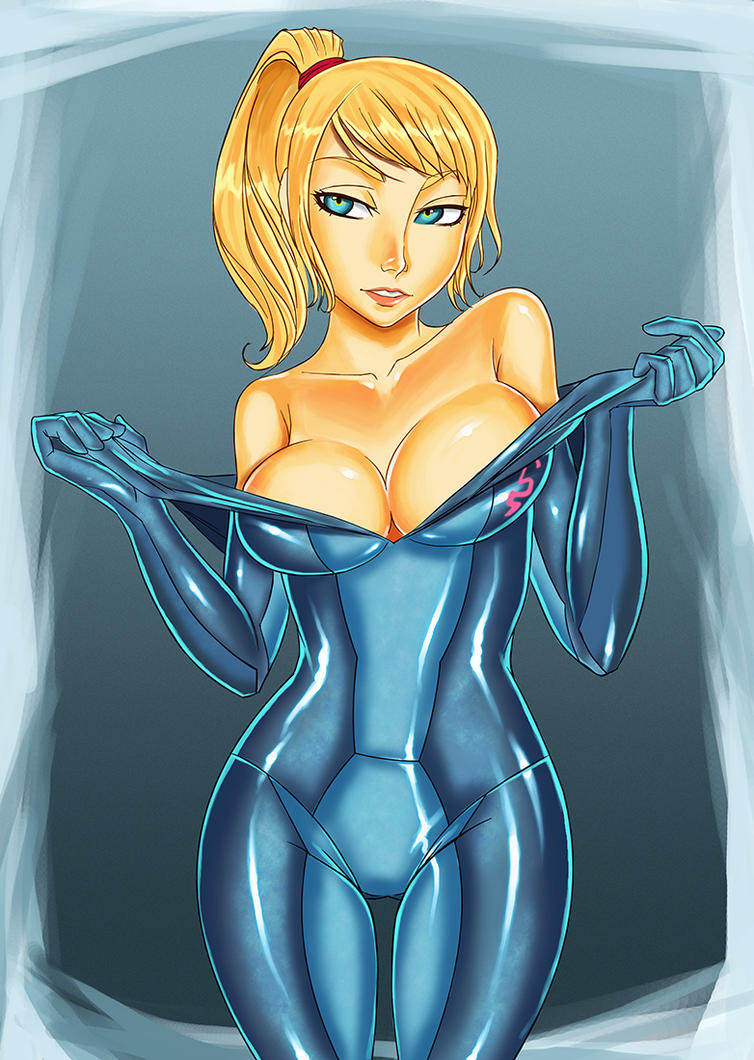
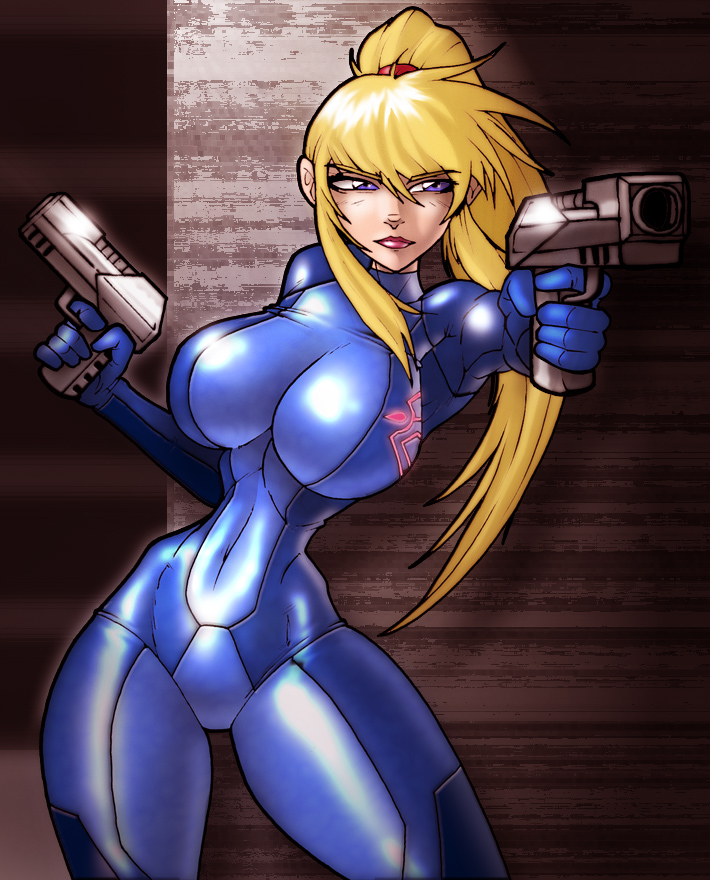





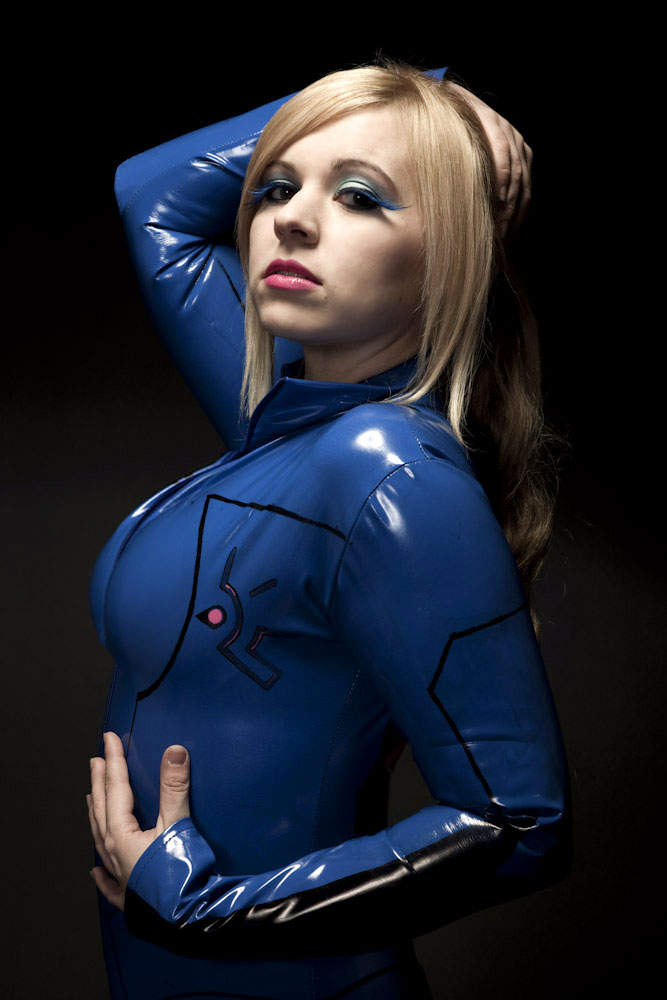



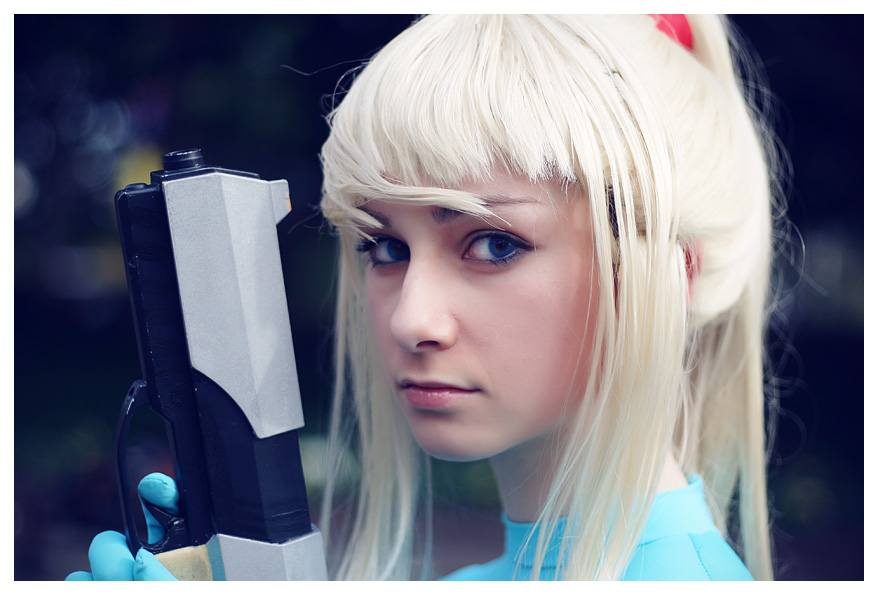
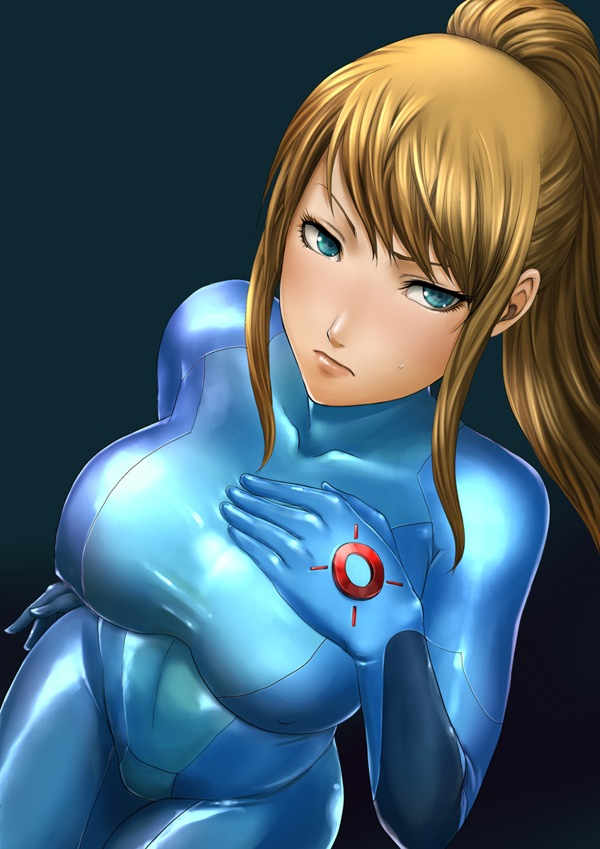
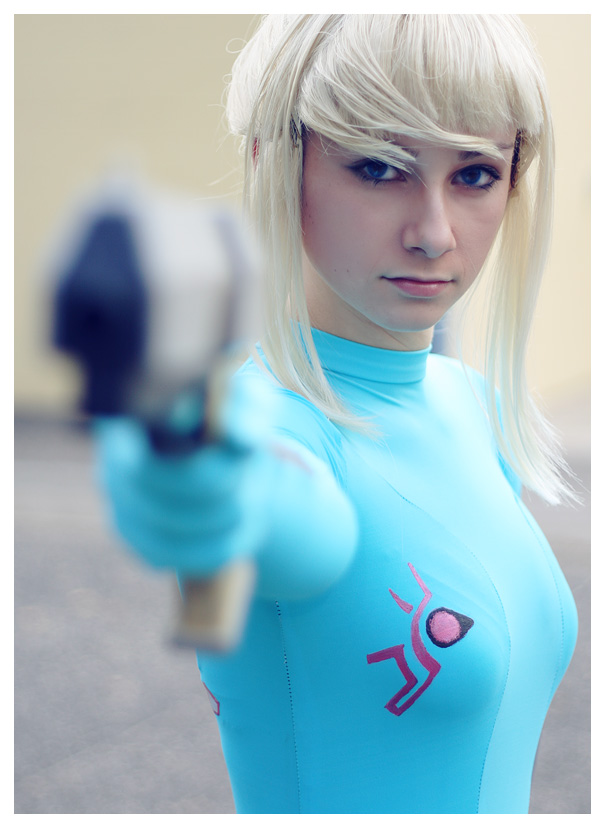
No comments:
Post a Comment